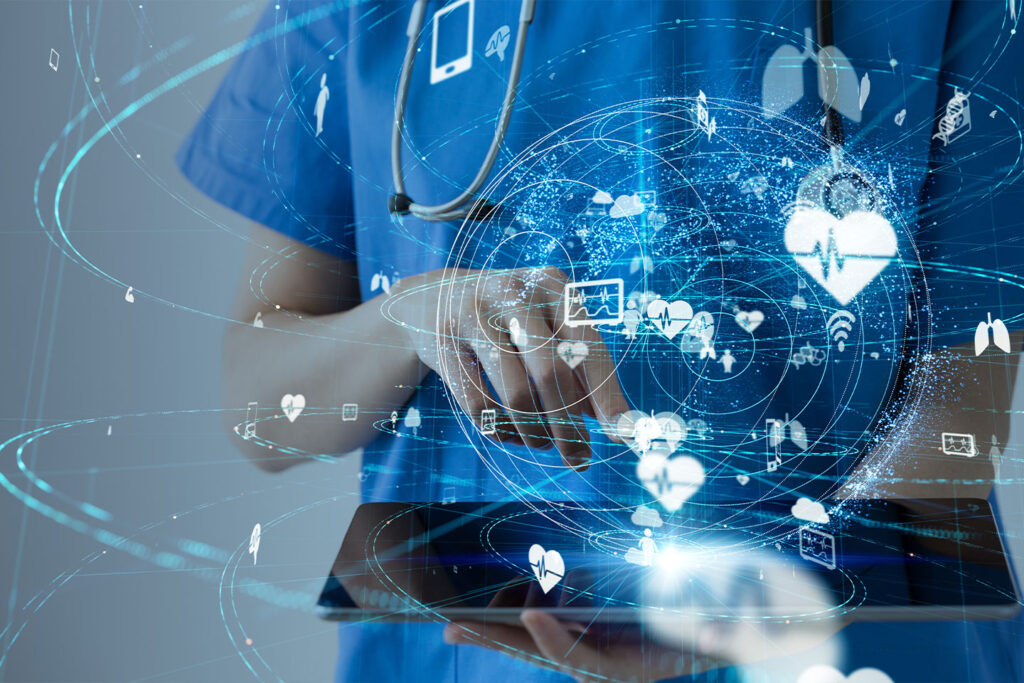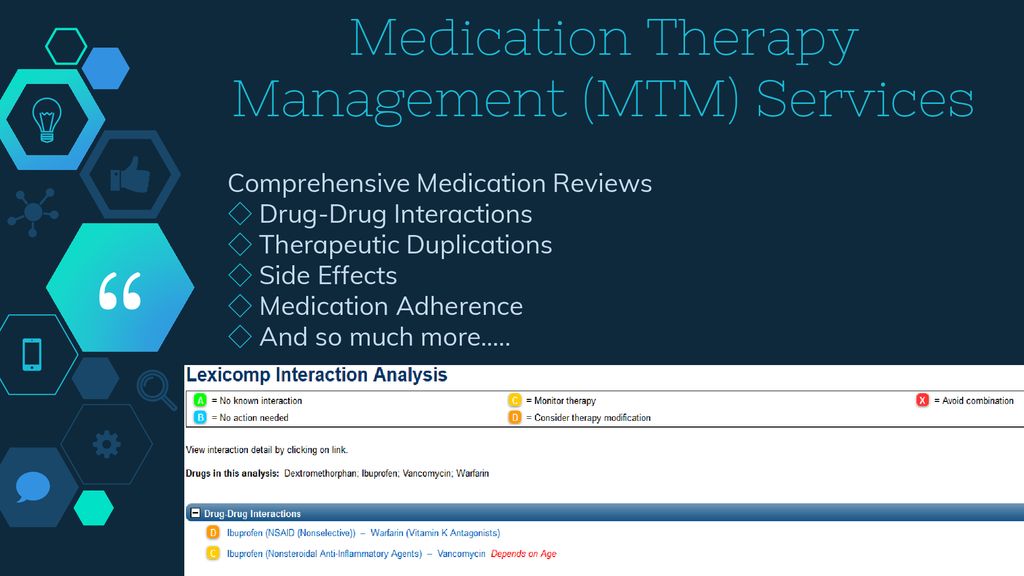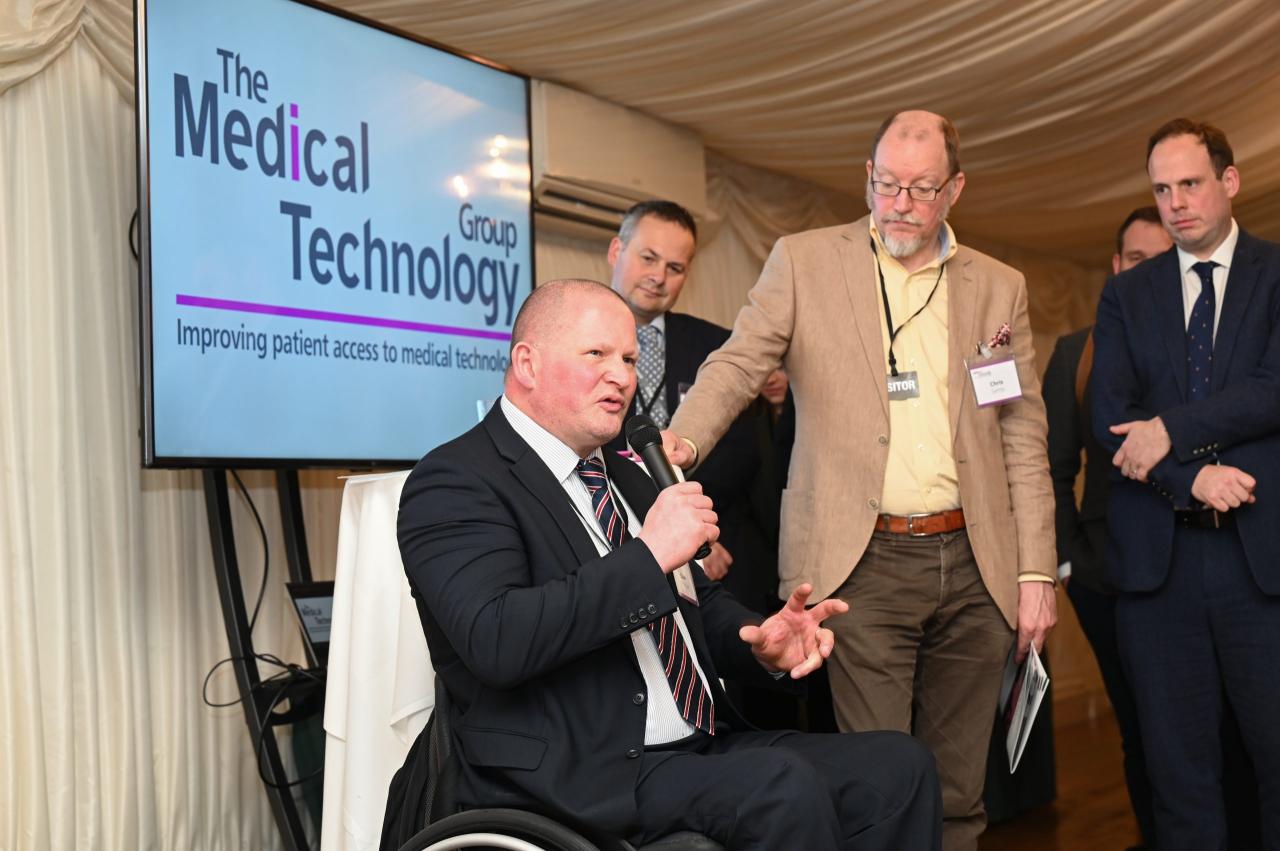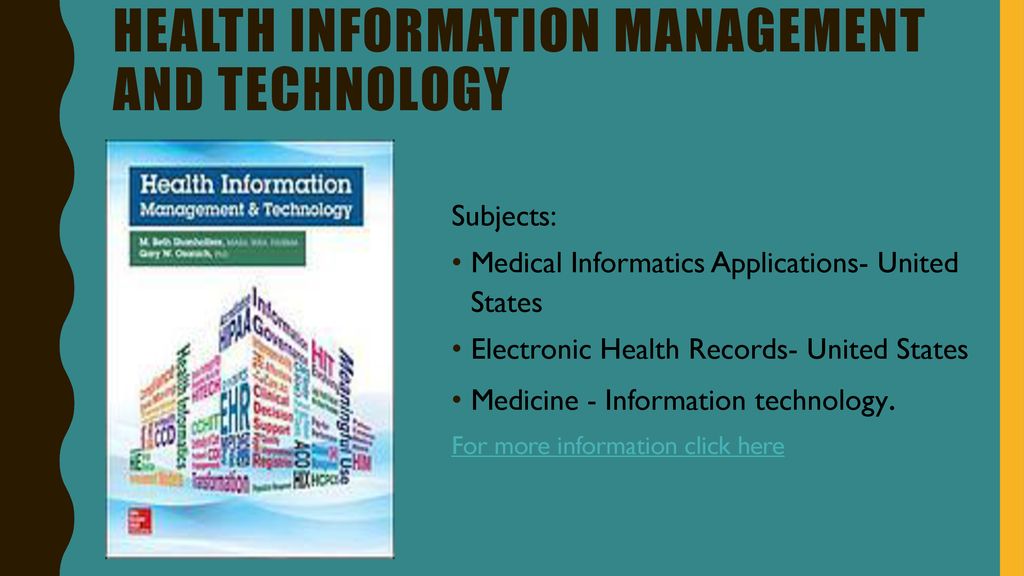Medical Office Technology: Revolutionizing Healthcare
Medical office technology has become an integral part of the healthcare landscape, transforming the way medical professionals deliver care and patients experience healthcare. From electronic health records (EHRs) that streamline […]
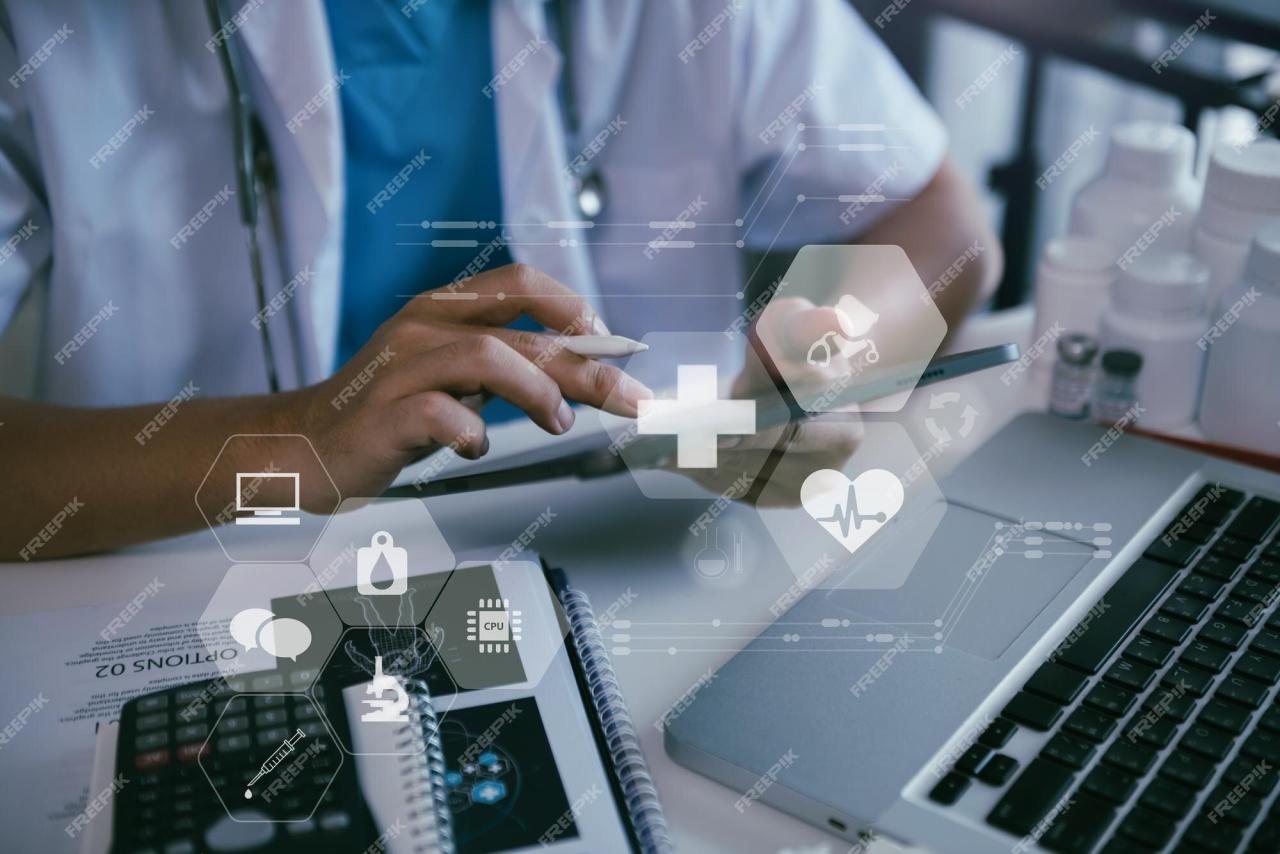
Medical office technology has become an integral part of the healthcare landscape, transforming the way medical professionals deliver care and patients experience healthcare. From electronic health records (EHRs) that streamline patient information management to telehealth platforms that bridge geographical barriers, technology has revolutionized the medical office, enhancing efficiency, improving patient outcomes, and fostering a more connected healthcare ecosystem.
This technology encompasses a wide range of tools and systems designed to optimize administrative processes, facilitate communication, and enhance patient care. These tools include EHRs, practice management software, telehealth platforms, and medical imaging systems, each playing a crucial role in improving the efficiency and effectiveness of healthcare delivery.
Evolution of Medical Office Technology

The realm of medical office technology has undergone a remarkable transformation, driven by advancements in computing, communication, and data management. This evolution has revolutionized healthcare delivery, improving patient care, streamlining administrative processes, and enhancing overall efficiency.
Traditional Paper-Based Systems
Traditional paper-based systems were the mainstay of medical offices for decades. These systems relied heavily on manual processes, including paper charts, handwritten notes, and physical filing cabinets. While these systems provided a basic framework for patient information management, they presented several challenges:
- Inefficient Data Retrieval: Locating specific patient records could be time-consuming, especially in large practices with extensive files.
- Data Redundancy and Errors: Handwritten notes were prone to errors and inconsistencies, leading to potential inaccuracies in patient records.
- Limited Data Sharing: Sharing patient information between healthcare providers was cumbersome, often requiring physical transfer of paper records.
- Storage and Security Concerns: Maintaining physical files required significant space and presented security risks, including loss or damage.
Modern Electronic Health Records (EHRs)
The advent of electronic health records (EHRs) ushered in a new era of medical office technology. EHRs are digital versions of patient charts, encompassing comprehensive medical information, including patient demographics, diagnoses, medications, allergies, immunizations, lab results, and imaging reports.
- Enhanced Data Access and Retrieval: EHRs provide instant access to patient information, enabling healthcare providers to make informed decisions quickly and efficiently.
- Improved Data Accuracy and Consistency: Automated data entry and electronic documentation reduce the risk of errors and inconsistencies, ensuring accurate and reliable patient records.
- Facilitated Data Sharing: EHRs enable secure and seamless sharing of patient information between healthcare providers, fostering coordinated care and improving patient outcomes.
- Enhanced Security and Privacy: EHRs employ robust security measures, including encryption and access controls, to protect patient data from unauthorized access.
Impact of Technological Advancements
Technological advancements in medical office technology have had a profound impact on patient care, administrative processes, and healthcare efficiency:
- Improved Patient Care: EHRs provide healthcare providers with comprehensive patient information, enabling them to make more informed clinical decisions and personalize treatment plans. They also facilitate better communication between providers, leading to more coordinated care and improved patient outcomes.
- Streamlined Administrative Processes: EHRs automate administrative tasks, such as scheduling appointments, billing, and insurance claims processing, freeing up staff time for patient care. They also reduce paperwork and improve overall efficiency.
- Enhanced Healthcare Efficiency: EHRs enable data analysis and reporting, providing insights into patient populations, disease trends, and healthcare utilization patterns. This information helps healthcare organizations improve efficiency, allocate resources effectively, and identify areas for quality improvement.
Key Components of Medical Office Technology
Medical offices rely on a suite of technologies to manage patient care, streamline workflows, and improve efficiency. These technologies play a crucial role in transforming healthcare delivery, enabling providers to make better decisions, enhance communication, and ultimately improve patient outcomes.
Electronic Health Records (EHRs)
EHRs are digital versions of patients’ paper charts, offering a comprehensive and secure repository of medical information. They centralize data from various sources, including patient demographics, medical history, medications, allergies, lab results, and imaging reports.
EHRs streamline patient care by:
- Improving data accuracy and accessibility: EHRs eliminate the risk of lost or misplaced paper charts, ensuring that healthcare providers have access to the most up-to-date information.
- Facilitating efficient documentation: EHRs automate data entry, reduce paperwork, and minimize errors, allowing providers to spend more time with patients.
- Enabling better decision-making: EHRs provide real-time insights into patient health, allowing providers to make informed decisions about treatment plans and preventive care.
- Enhancing patient engagement: EHR portals enable patients to access their medical records, schedule appointments, and communicate with their providers, promoting active participation in their healthcare.
Practice Management Software
Practice management software is designed to manage the administrative and financial operations of a medical office. It encompasses various functionalities, including scheduling, billing, insurance claims processing, patient communication, and reporting.
Practice management software streamlines workflows by:
- Optimizing scheduling: The software automates appointment scheduling, reducing no-shows and maximizing appointment slots.
- Simplifying billing and insurance claims: It automates billing processes, tracks patient payments, and manages insurance claims, ensuring timely reimbursement.
- Improving patient communication: The software facilitates communication with patients through automated reminders, appointment confirmations, and online portals.
- Providing insightful reports: Practice management software generates reports on key performance indicators, enabling providers to monitor financial health, identify areas for improvement, and make data-driven decisions.
Telehealth Platforms, Medical office technology
Telehealth platforms leverage technology to deliver healthcare services remotely, connecting patients and providers via video conferencing, phone calls, and messaging.
Telehealth platforms enhance patient care by:
- Expanding access to healthcare: Telehealth removes geographical barriers, allowing patients in remote areas or with limited mobility to access specialized care.
- Improving patient convenience: Patients can consult with their providers from the comfort of their homes, eliminating the need for travel and reducing wait times.
- Facilitating remote monitoring: Telehealth platforms enable providers to monitor patients’ health remotely, allowing for early detection of potential health issues and proactive interventions.
- Reducing healthcare costs: Telehealth can reduce costs associated with travel, hospital visits, and unnecessary procedures.
Medical Imaging Systems
Medical imaging systems use advanced technologies, such as X-ray, ultrasound, MRI, and CT scans, to create detailed images of the inside of the body.
Medical imaging systems play a vital role in diagnosis and treatment by:
- Providing detailed anatomical information: Images reveal abnormalities, injuries, and disease processes, aiding in accurate diagnosis.
- Guiding surgical procedures: Imaging systems allow surgeons to visualize the anatomy in real-time, improving precision and reducing complications.
- Monitoring treatment progress: Images help track the effectiveness of treatments, allowing providers to adjust plans as needed.
- Detecting early signs of disease: Medical imaging can identify potential health problems before symptoms appear, enabling early intervention and better outcomes.
Table of Key Medical Office Technology Components
| Component | Key Functions | Benefits for Providers | Benefits for Patients |
|---|---|---|---|
| Electronic Health Records (EHRs) | Patient data management, documentation, decision support, communication | Improved data accuracy, streamlined workflows, enhanced decision-making, better patient engagement | Secure access to medical records, improved communication with providers, personalized care plans |
| Practice Management Software | Scheduling, billing, insurance claims, patient communication, reporting | Efficient operations, reduced administrative burden, improved financial management, data-driven insights | Convenient appointment scheduling, clear communication, streamlined billing process |
| Telehealth Platforms | Remote consultations, virtual visits, patient monitoring | Expanded access to care, improved patient convenience, remote monitoring capabilities, cost reduction | Convenient access to healthcare, reduced travel time, increased patient engagement, cost savings |
| Medical Imaging Systems | Diagnostic imaging, surgical guidance, treatment monitoring | Accurate diagnosis, improved surgical outcomes, effective treatment planning, early disease detection | Detailed anatomical information, improved treatment outcomes, faster diagnosis, personalized care |
Benefits of Implementing Medical Office Technology
The integration of technology into medical offices has revolutionized healthcare delivery, offering numerous advantages for both providers and patients. These advancements streamline workflows, enhance communication, and ultimately improve patient care.
Improved Patient Engagement
The adoption of medical office technology has significantly enhanced patient engagement, empowering patients to actively participate in their healthcare journey.
- Patient Portals: These online platforms provide patients with secure access to their medical records, appointment schedules, test results, and billing information. This transparency allows patients to actively manage their health, schedule appointments, and communicate with their providers conveniently.
- Telehealth: Telemedicine platforms facilitate remote consultations, allowing patients to receive care from the comfort of their homes. This is particularly beneficial for patients with mobility limitations, chronic conditions, or those residing in remote areas.
- Mobile Apps: Mobile health applications offer patients tools for tracking their health metrics, managing medications, and accessing health information. These apps promote self-management and provide patients with personalized insights into their health.
Enhanced Communication
Effective communication is paramount in healthcare, and medical office technology has significantly improved communication channels between providers and patients.
- Electronic Health Records (EHRs): EHRs enable seamless information sharing among healthcare providers, ensuring continuity of care and reducing the risk of medical errors.
- Secure Messaging: Secure messaging platforms allow patients to communicate directly with their providers, ask questions, and receive updates regarding their health. This eliminates the need for phone calls and improves response times.
- Appointment Reminders: Automated appointment reminders via text messages or emails reduce missed appointments, optimize clinic schedules, and improve patient adherence to care plans.
Reduced Medical Errors
Medical errors are a significant concern in healthcare, and technology plays a crucial role in minimizing their occurrence.
- Clinical Decision Support Systems (CDSS): These systems provide healthcare providers with real-time guidance and alerts, supporting clinical decision-making and reducing the likelihood of medication errors or missed diagnoses.
- Barcoding and Automated Dispensing: Barcoding systems ensure accurate medication administration by verifying patient identity and medication dosage. Automated dispensing systems further enhance safety by controlling medication inventory and tracking dispensing records.
- EHR Data Analytics: EHR data analytics allows healthcare providers to identify trends, patterns, and potential risks in patient care, enabling proactive interventions and reducing the occurrence of adverse events.
Optimized Resource Allocation
Medical office technology enables efficient resource allocation, streamlining workflows and optimizing utilization of staff and equipment.
- Practice Management Software: This software simplifies administrative tasks, including scheduling, billing, and patient management, allowing staff to focus on providing patient care.
- Remote Monitoring: Remote patient monitoring systems allow healthcare providers to track patients’ vital signs and health metrics remotely, reducing the need for frequent clinic visits and freeing up resources for other patients.
- Automated Scheduling: Automated scheduling systems optimize appointment scheduling, minimizing wait times and maximizing clinic efficiency.
Real-World Examples
The successful implementation of medical office technology has yielded significant improvements in healthcare outcomes.
- The Mayo Clinic has adopted advanced EHR systems and telemedicine platforms, enabling seamless patient care and improved communication among providers. This has resulted in reduced wait times, enhanced patient satisfaction, and improved clinical outcomes.
- The Cleveland Clinic has implemented a comprehensive clinical decision support system, reducing medication errors and improving patient safety. The system provides real-time alerts and guidance to physicians, ensuring appropriate medication dosages and minimizing the risk of adverse drug events.
Challenges and Considerations in Medical Office Technology Adoption
While the benefits of implementing medical office technology are numerous, there are also challenges and considerations that need to be addressed for successful adoption. This section will delve into some of the key obstacles and provide insights into how to overcome them.
Cost of Implementation
The initial investment in medical office technology can be significant, encompassing hardware, software, and ongoing maintenance costs. This financial burden can be a deterrent for smaller practices, especially those with limited budgets.
- Cost-effective Solutions: Exploring affordable options like cloud-based software, bundled packages, and refurbished hardware can help mitigate the financial strain.
- Return on Investment (ROI): Analyzing the potential ROI, such as increased efficiency, reduced errors, and improved patient satisfaction, can justify the investment.
- Funding Options: Exploring funding options like government grants, loans specifically for healthcare technology, or vendor financing can make the technology more accessible.
Training and Support
Implementing new technology requires adequate training for staff to ensure proper usage and maximize its benefits.
- Comprehensive Training Programs: Providing comprehensive training programs that cover all aspects of the software and hardware, including troubleshooting and best practices, is crucial.
- Ongoing Support: Offering ongoing support through dedicated help desks, user manuals, and online resources empowers staff to overcome challenges and maintain proficiency.
- User-Friendly Interfaces: Selecting technology with intuitive interfaces and user-friendly designs can minimize the learning curve and encourage adoption.
Data Security and Compliance
Protecting patient data is paramount in healthcare, and medical office technology must adhere to strict security measures and regulatory compliance requirements.
- Data Encryption: Implementing data encryption protocols, both in transit and at rest, is essential to prevent unauthorized access to sensitive patient information.
- Access Control: Establishing robust access control measures, including role-based access and multi-factor authentication, ensures only authorized personnel can access data.
- Regular Security Audits: Conducting regular security audits and vulnerability assessments helps identify and address potential security weaknesses.
- Compliance with Regulations: Ensuring compliance with regulations like HIPAA (Health Insurance Portability and Accountability Act) and GDPR (General Data Protection Regulation) is crucial to protect patient privacy and confidentiality.
Integration with Existing Systems
Integrating new technology with existing systems, such as electronic health records (EHRs), practice management software, and billing systems, can be challenging.
- Interoperability Standards: Selecting technology that adheres to interoperability standards, like HL7 (Health Level Seven), facilitates seamless data exchange between different systems.
- Vendor Collaboration: Collaborating with vendors to ensure compatibility and smooth integration of new technology with existing systems is essential.
- Data Migration: Developing a comprehensive data migration plan to transfer patient data accurately and securely to the new system is crucial.
Future Trends in Medical Office Technology

The medical office technology landscape is constantly evolving, driven by advancements in artificial intelligence, cloud computing, wearable devices, and personalized medicine. These trends hold immense potential to transform patient care, healthcare delivery, and the overall healthcare landscape.
Impact of Emerging Trends on Healthcare
The convergence of these trends is shaping the future of healthcare, leading to more efficient, personalized, and data-driven care. The impact of these trends can be observed in various aspects of healthcare practices:
- Enhanced Patient Engagement: AI-powered chatbots and virtual assistants can provide patients with 24/7 access to medical information, schedule appointments, and manage their health records. This increased engagement empowers patients to take a more active role in their healthcare journey.
- Precision Medicine: Wearable devices and other health monitoring technologies collect vast amounts of data, enabling personalized medicine approaches. This data can be used to tailor treatments to individual patients based on their unique genetic makeup, lifestyle, and environmental factors.
- Improved Efficiency: Cloud computing allows medical offices to access and share patient data securely and efficiently, reducing administrative burdens and enabling streamlined workflows. This fosters a more collaborative environment for healthcare professionals.
- Remote Patient Monitoring: Remote patient monitoring technologies, often integrated with wearable devices, enable healthcare providers to track patients’ vital signs and health indicators remotely. This empowers proactive care, reducing hospital readmissions and improving patient outcomes.
Potential Future Trends in Medical Office Technology
Here’s a table showcasing potential future trends in medical office technology, their potential benefits, and their anticipated impact on healthcare practices:
| Trend | Potential Benefits | Impact on Healthcare Practices |
|---|---|---|
| AI-Powered Diagnosis and Treatment Planning | Faster and more accurate diagnosis, personalized treatment plans, reduced medical errors | More efficient and effective healthcare delivery, improved patient outcomes, reduced healthcare costs |
| Virtual Reality (VR) and Augmented Reality (AR) in Healthcare | Enhanced medical training, immersive patient education, pain management, and rehabilitation | Improved patient experience, enhanced medical education, and innovative treatment approaches |
| Blockchain Technology for Secure Data Management | Enhanced data security and privacy, improved interoperability between healthcare systems, and reduced administrative burden | Increased trust and transparency in healthcare data, improved patient data management, and facilitated research collaborations |
| Internet of Medical Things (IoMT) | Real-time patient monitoring, proactive care, and personalized healthcare solutions | Enhanced patient safety, improved disease management, and a shift towards preventive healthcare |
Final Review

The integration of medical office technology continues to shape the future of healthcare, promising a more patient-centric, data-driven, and accessible healthcare experience. As technology evolves, we can expect even more innovative solutions to emerge, further enhancing the quality and efficiency of medical care.
Medical office technology is constantly evolving, with new innovations streamlining processes and improving patient care. One area where technology plays a crucial role is in maintaining the integrity of vaccines and other temperature-sensitive medications. This is where cold chain technologies come into play, ensuring that vital medical supplies are stored and transported at the proper temperatures.
Companies like cold chain technologies lebanon tn specialize in providing these essential solutions, ensuring the safety and efficacy of medications throughout the supply chain, ultimately contributing to the overall success of medical offices.
